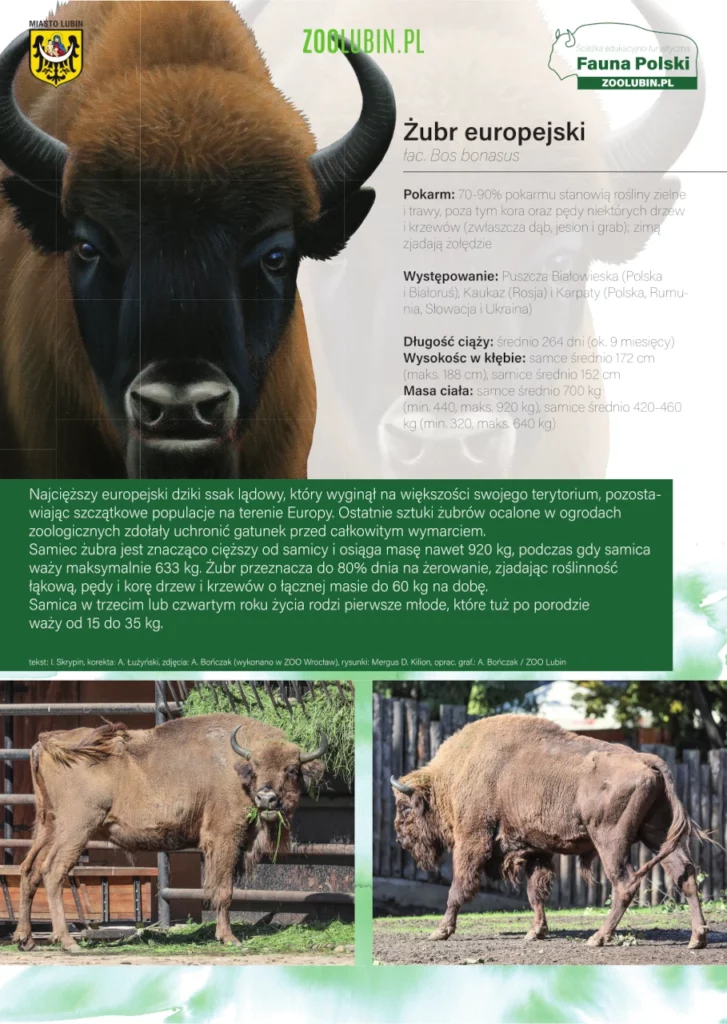
DOWNLOAD THE SPECIES LABEL – PDF file (size 9.2 MB)
European bison
Latin. Bison bonasus Linnaeus, 1758
Europe’s heaviest wild land mammal, which has become extinct over most of its territory, leaving vestigial populations throughout Europe. The last bison specimens rescued in zoos have managed to save the species from total extinction.
The male bison is much heavier than the female. He reaches a weight of up to 920 kg, while the female weighs a maximum of 633 kg. The bison spends up to 80% of the day foraging, eating meadow vegetation, shoots and bark of trees and shrubs with a total weight of up to 60 kg per day. In the third or fourth year of life, the female gives birth to her first young, which weigh between 15 and 35 kg shortly after birth.
Food: 70-90% herbaceous plants and grasses, in addition to bark and shoots of some trees and shrubs (especially oak, ash and hornbeam); in winter also acorns
Distribution: Bialowieza Forest (Poland and Belarus), Caucasus (Russia), Carpathians (Poland, Romania, Slovakia and Ukraine)
male
Height at withers: average 172 cm (max. 188 cm)
Body weight: average 700 kg (min. 440, max. 920 kg)
female
Height at withers: 152 cm on average
Body weight: average 440 kg (min. 320, max. 640 kg)
Gestation length: average 264 days (about 9 months)
